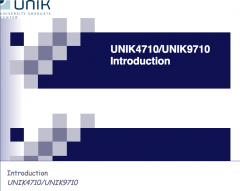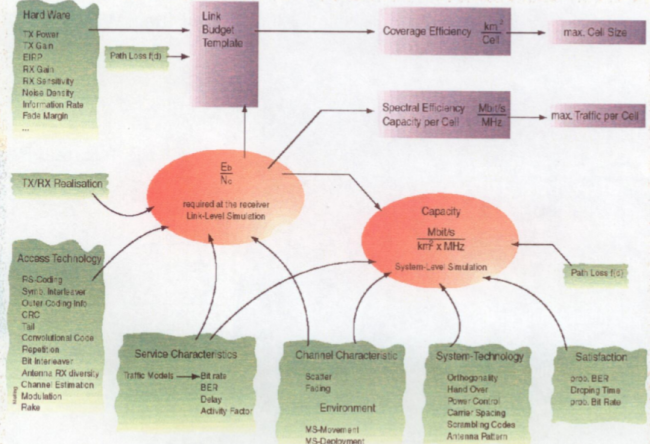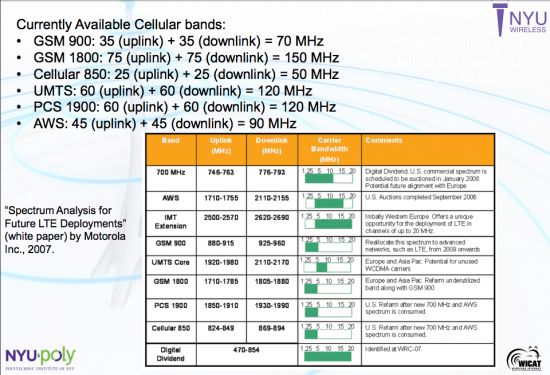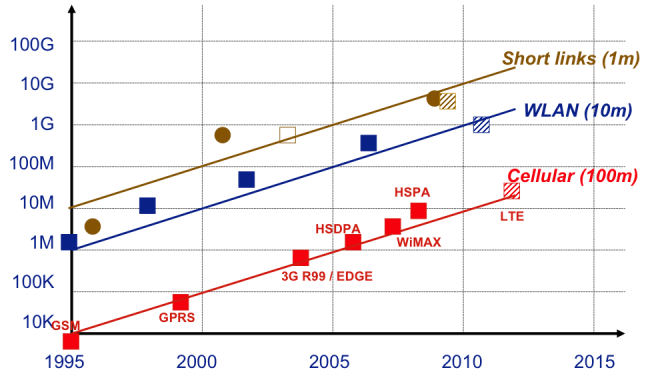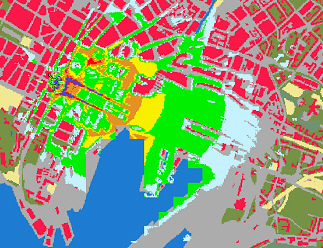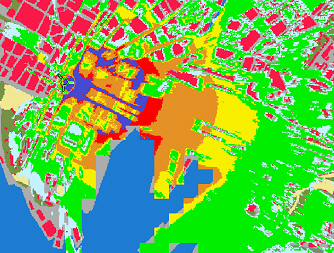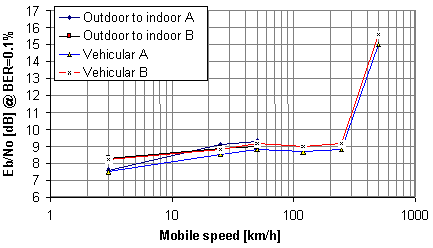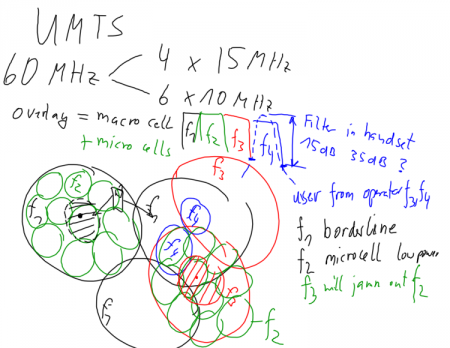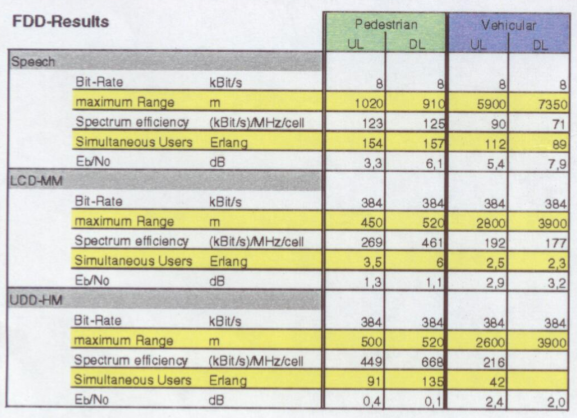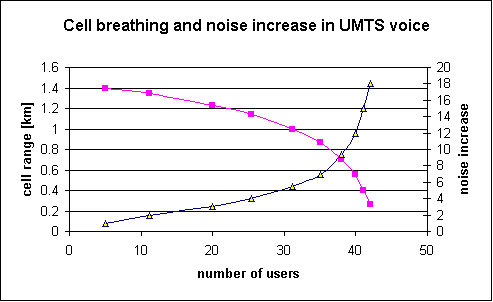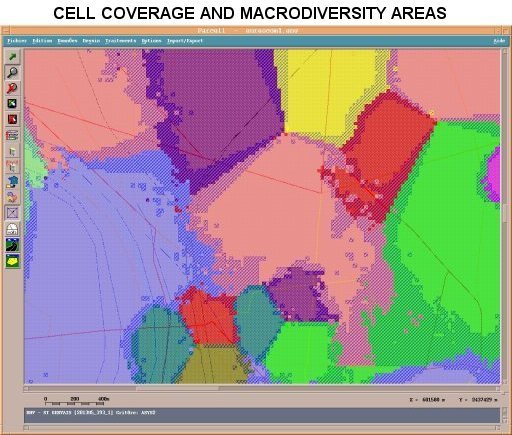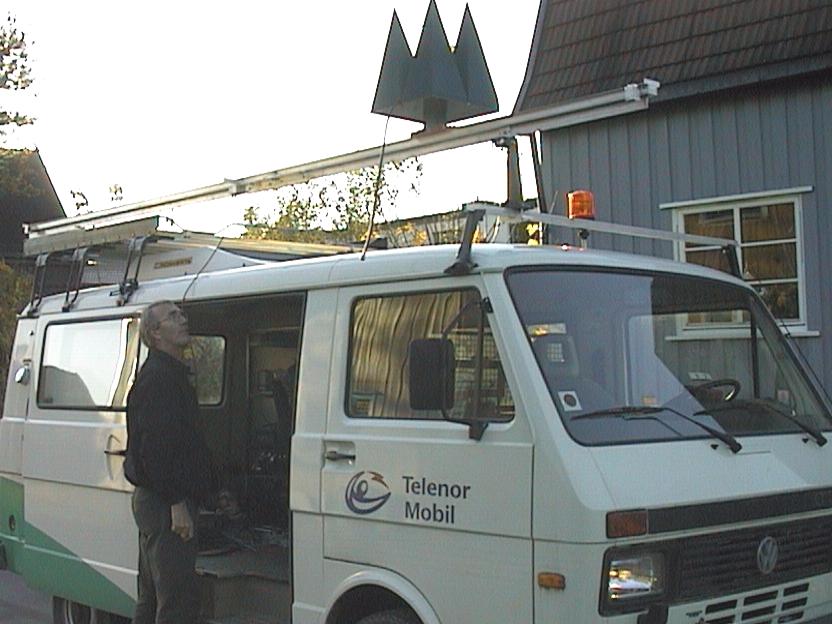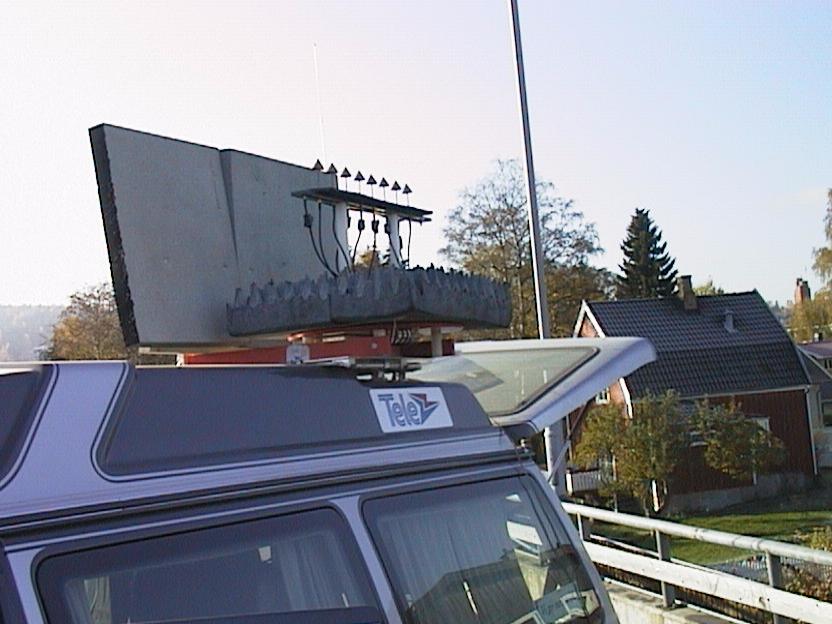Mobile evolution 5G (B6,D4,F1)
| Wiki for ITS | ||||||
|---|---|---|---|---|---|---|
|
Mobile evolution 5G (B6,D4,F1)
| Course | UNIK4700, UNIK9700 |
|---|---|
| Title | Mobile Systems, LTE and beyond |
| Lecture date | 2017/11/14 1300-1600 |
| presented | by Josef Noll |
| Objective | |
| Learning outcomes | Understand the challenges in 4G and 5G communications (B6,D4) |
| Pensum (read before) | |
| References (further info) | |
| Keywords | LTE, LTE Advanced, VoLTE |
this page was created by Special:FormEdit/Lecture, and can be edited by Special:FormEdit/Lecture/Mobile evolution 5G (B6,D4,F1).
- What are the main differences between 2G, 3G, and 4G?
- What is cell breathing in 3G?
- Why do we call 3G an interference limited system?
- What are the main challenges for 5G?
- Why is mobile communication from within a building a challenge?
- What are femto cells?
- What is a micro operator?
Presentation and Lecture Notes
- lecture Notes h17: Media:20171114LTE_notes.pdf
- lecture Notes h16: Media:20161129-LTE-notes.pdf
- lecture Notes h14: Media:201410WiMax-LTE-notes.pdf
- WiMAX by Qihaoli: Media:WiMAX_Qihaoli.pptx
- Voice over LTE by Mikhail
- Title
- UNIK4700/UNIK9700 Mobile Dependencies
- Author
- Josef Noll,
- Footer
- Mobile evolution 5G (B6,D4,F1)
- Subfooter
- UNIK4700/UNIK9700
Further Reading
- Course material from UNIK4230 Mobile Communications
⌘ TOC
⌘Relation between parameters in mobile communications
(Source:Telenor Unik/FoU 3-99 brochure)
⌘ Mobile Communication Spectrum
|
Source: http://www.spectrum2020.ca/presentations/Rappaport.pdf |
⌘ The challenge of area coverage
Land area Norway, 385.178 km^2 - 7500 basestasjons http://www.mynewsdesk.com/no/telenor/pressreleases/sjekk-naar-du-faar-4g-der-du-bor-1399662
- Tanzania 947,303 km^2 = 3 x Norway,
- Mali 1.240.000 km^2 = 4 x Norway
- DRC 2.345.000 km^2 = 8 x Norway
⌘ Throughput increase
[Presentation G. Fettweis, IEEE VTC forum Baltimore], http://www.ieeevtc.org/plenaries/vtc2007fall/28.pdf
⌘Example of propagation
Results for UMTS (worst case), with 3 sector antenna
- Range of unloaded cell is 700 m in urban pedestrian
- With loaded cell, assumed increase of noise by 10 dB, max cell radius 390 m
- vehicular with typical range of 3600 m (unloaded) and 1900 m (loaded)
- Next: examples and simulations
⌘Oslo simulations, performed for GSM at 1800 MHz
how much does the range decrease when reducing the power by 10 dB?
(Source: Helge Dommarsnes, Telenor Mobil)
⌘Difference GSM - UMTS
- Frequency
- Receiver structure
- GSM sliding window of 16
- UMTS Rake receiver
- GSM sliding window of 16
Q16ratio:The ratio of the power inside to the power outside a window of duration 16 . For each IR the window is slid to find the position with highest power inside the window.
(Source:R Rækken, G. Løvnes, Telektronikk)
⌘Results of link level simulation
Simulations to achieve minimum W-CDMA using given QoS parameter: here voice service
(Source: Eurescom P921, D2)
⌘UMTS cell planning
⌘UMTS traffic simulations
Note: voice, Low constraint delay (LCD, typical streaming) and Unconstrained data delay (UDD, typical ftp, email)
(Source:Telenor FoU report 3-99)
⌘Cell Breathing effect in UMTS
View: http://www.eurescom.de/~public-web-deliverables/P900-series/P921/D2/index.html for "live simulation" and "Cell Ranges for GSM1800 and UMTS Services"
(Source: Eurescom P921, D2)
⌘Network planning
GSM versus UMTS
- UMTS is interference limited
- GSM is build on frequency reuse in the cells, while UMTS has the same frequency in neighbouring cells
- UMTS range is capacity limited
- UMTS requires simultaneous cell planning and network dimensioning
- handover is network based, the handset announces, network performs the handover
- In UMTS a mobile phone can be connected to two cells at the same time, the handover is then called soft handover. Handover between sectors in of the same antenna are called softer handover
⌘Cell cover and macro-diversity areas
Outcome of Eurescom P921 system level simulations
(Source: Eurescom P921, D2)
⌘Smart antennas and MIMO measurements
GSM
Example GSM: the upload band is from 880-915 Unik/MHz (in Europe), which is 35 Unik/MHz. With a carrier of 200 kHz we have 175 channels, which have to be divided between the various operators.
UMTS specifications
http://www.umtsworld.com/technology/wcdma.htm
⌘4G/LTE technology
- OFDMA based, time, frequency and code scheme, see: https://www.youtube.com/watch?v=Lu4I0iWhmZM
- see: https://www.youtube.com/watch?v=QEpxtiN8Trc (from OFDM to OFDMA)
⌘LTE 450 MHz
LTE 450 pro's and con's from Ovum conf. publication (.pdf)
- Band 31, limited bandwidth of 2 x 10 MHz
⌘ IMT-A (4G): WiMAX, LTE
IMT-Advanced (IMT-A) is often called the 4G standard for Mobile Communications. Both WiMAX through the 802.16e and LTE provide technologies for achieving higher data throughput.
Though LTE was originally designed to work in the
Evolution of radio spectrum, and frequency bands for LTE http://www.radio-electronics.com/info/cellulartelecomms/lte-long-term-evolution/lte-frequency-spectrum.php
LTE FDD band, source:radioelectronics.com
LTE TDD band, source: radioelectronics.com
Presentations from earlier courses
WIMAX
- Media:WIMAX.pdf (by Dag Ove, 2012)
- File:Achieving Wireless Broadband with WiMax.pdf
- Media:IEEE 802.16 Standards - The working group and documents.pdf
- Media:Sleep Mode Operation - WiMax.pdf
- Media:The WiMax IEEE 802.16e Physical Layer Model.pdf
- Media:Wimax - Current Performance Benchmarks and Future Potensial.pdf
⌘Verizon Wireless reveals LTE speeds
- from Mobile Business Briefing 7 December 2009
- Verizon Wireless: average downlink 5-12 Mb/s and uplink 2-5 Mb/s (LTE)
⌘Unstrung.com - Wireless News, 24 Nov 2009
11:20 AM -- Four Finnish operators got some Long Term Evolution (LTE 2.6 GHz) and WiMax spectrum for just €3.8 million (US$5.6 million). (See Finland Awards 4G Spectrum.)
- LTE FDD Elisa Corp. bid €834,700 ($1.2 million) for 50 MHz;
- TeliaSonera AB (Nasdaq: TLSN) bid €819,200 ($1.2 million) for 50 MHz; and
- DNA Oy bid € 675,700 ($1 million) for 40 MHz.
- WiMax spectrum (TDD, now LTE TDD), Pirkanmaan Verkko Oy bid € 1,468,200 ($2.2 million) for 50 MHz.
Nordic:
- Norway 229 million Norwegian Kronor ($41 million) in 2007
- Sweden 2 billion Swedish Kronor ($304 million) in 2008.
Sources: See Craig Goes to Norway, Sweden Awards 4G Spectrum, Swedish 4G, Telenor to Test Huawei LTE, and TeliaSonera: We'll Do 4G in 2010
⌘Norway: NPT license conditions
from: [Norwegian Post Telecommunication Regulator (NPT) http://www.npt.no/portal/page/portal/PG_NPT_NO_NO/PAG_NPT_NO_HOME/PAG_RESSURSER_TEKST?p_d_i=-121&p_d_c=&p_d_v=104880]
- 2500-2690 MHz and 2010-2025 MHz. The new licenses expire 31 December 2022.
- five sub-bands, each consisting of a number of contiguous frequency blocks.
- six different regions.
The five sub-bands are:
- (A) The 2010 MHz band, consisting of a single 15MHz block.
- (B) Five unpaired blocks of 10MHz at the centre of the 2.6GHz band (2570 MHz to 2620 MHz).
- (C) Eight paired blocks of 2x5 MHz in the 2.6 GHz band (2500-2540 MHz paired with 2620-2660 MHz).
- (D) Three unpaired blocks of 10 MHz below sub-band B in the 2.6 GHz band (2540-2570 MHz).
- (E) Three unpaired blocks of 10 MHz at the top end of the 2.6 GHz band (2660-2690 MHz)
Note: Unpaired is TDD operation, while paired is FDD operation
⌘ Price policy
The total amount will consist of
- a fixed component per contiguous spectrum block
- a variable component that will depend on the bandwidth at disposal and the population in the geographical area
- Estimate for 2008
- annual administrative charge of (NOK 25000 x number of contiguous blocks)
- + (NOK 1600 x bandwidth in MHz) x (regional percentage of Norway';s population).
<green>Q: take the Norwegian population and calculate the licence costs per region</green>
⌘ F1-5G and Future Network challenges
⌘ 5G Heterogeneous Networks
See presentation from Dhananjay Gore, Qualcomm Research, India at COMSNETS 2018
- 3GPPP Rel-15 specifications aligned with Qualcomm Research white paper Nov2015
- http://www.qualcomm.com/invention/technologies/5g-nr/mmwave
Presentation: Josef Noll, From coverage to quality: building the future network, Femtocells - Building the Quality Network for Mobile Operations - Oslo, 28 Oct 2010
Ayaz Khan Afridi, "Macro and Femto Network Aspects in Realistic LTE Usage Scenarios", Master Thesis, Network Services and System in Department of Electrical Engineering, Royal Institute of Technology (KTH), Stockholm, Sweden, May 2011.
⌘ Air Interface
Scalable OFDM-based 5G NR air interface
- Scalable numerology, scalable slot duration (efficient multiplexing of diverse latency and QoS requirements)
- Frequency localisation
- lower power consumption
- Asynchronous multiple access
Flexible slot-based 5G NR framework
- Self-contained slot structure (independently decode slots and avoid static timing relationships across slots)
- Blank subcarriers
- blank slots
⌘Channel coding
Channel coding
- Advanced ME-LDPC channel coding
- more efficient than LTE Turbo code, 4x at Code rate (R)=0.65, 5 at R=0.9
3x increase in spectrum efficiency
- explicit 3D beam forming with up to 256 antenna elements
- typical 3.8x increase from 4x4 MIMO to 5G NR Massive (256 antennas) MIMO (52 Mbps to 195 Mbps)
Large BW opportunity for mmWave
- 5G NR sub-6GHz (3.4-3.6 GHz)
- 5G NR mmWave (e.g. 24.25-27.5 GHz, 27.5-29.5 GHz)
⌘ Challenges in 5G
required:
- overcome significant path loss in bands above 24 GHz
- robustness: innovation to overcome mmWave blockage from hand, body, walls, foliage - non-LOS is a problem
- Device size/power integration into a mobile
- Dense network topology and spatial reuse (150-250m distance)
- colocation of 28 GHz on LTE channels
⌘ Early 5G
- Ubiquitous LTE coverage - Gigabit LTE, VoLTE
- Simultaneoud Dual-Connectivity across 5G NR and 4G LTE
- using: 5G NR below 6 GHz
- SA 5G NR having control & user plane on LTE RAN, and user plane on 5G RAN (LTE EPC)
Future, 5G NR evolution and expansion beyond eMBB
- Rel-15 Work item: URLLC
- Rel-15 Study items: 5G NR non orthogonal multiple access, e.g. RSMA, 5G NR for C-V2X communications
- higher spectrum: 40 GHz
⌘Evolving LTE IoT for massive IoT
- ubiquitous connectivity, achieving device link budget og 165 dB (max coupling loss)
- NR in unlicensed: Concept in 2016, 3GPP study item in 2018
- NR-based LAA, NR in unlicensed aggregated with LTE
MultiFire - own standing
MISSING:
- radio interface: Large cell low mobility sites (low density rural areas)
- interference with unlicensed technologies
⌘Ultra Reliable, Low Latency Communications
Application areas
- process industry, alarm, wireless-connected vehicles
- latency <1 ms, <10 ms,... in process control
- 99.999% uptime, delivery within 5 ms
⌘ #5Gforall, freemium access
- radio interface: Large cell low mobility sites (low density rural areas)
- freemium model for access (freemium = free + premium)
Missing aspects in 5G
- interface mobilehome network
- application-specific routing (service quality)
- interference with unlicensed technologies
⌘ Basic Internet
Presentation: Business perspective for India based on Basic Internet (.pdf)
⌘ Calculations
Establish the link budget and the capacity using a simplified model for
- a) a coverage area of 100 km, using 2G technology at 900 MHz and the models from
- b)
⌘ Video Distribution Networks
Idea originated by Kjetil Kjernsmo in UNIK4710, and presented at [1]
Discussions
- 5G coverage & capacity challenges
- micro-Operator (
O) - dealing with small groups, e.g. UiO as operator
- authentication, security
- Wifi & LTE co-existance for 5G services
